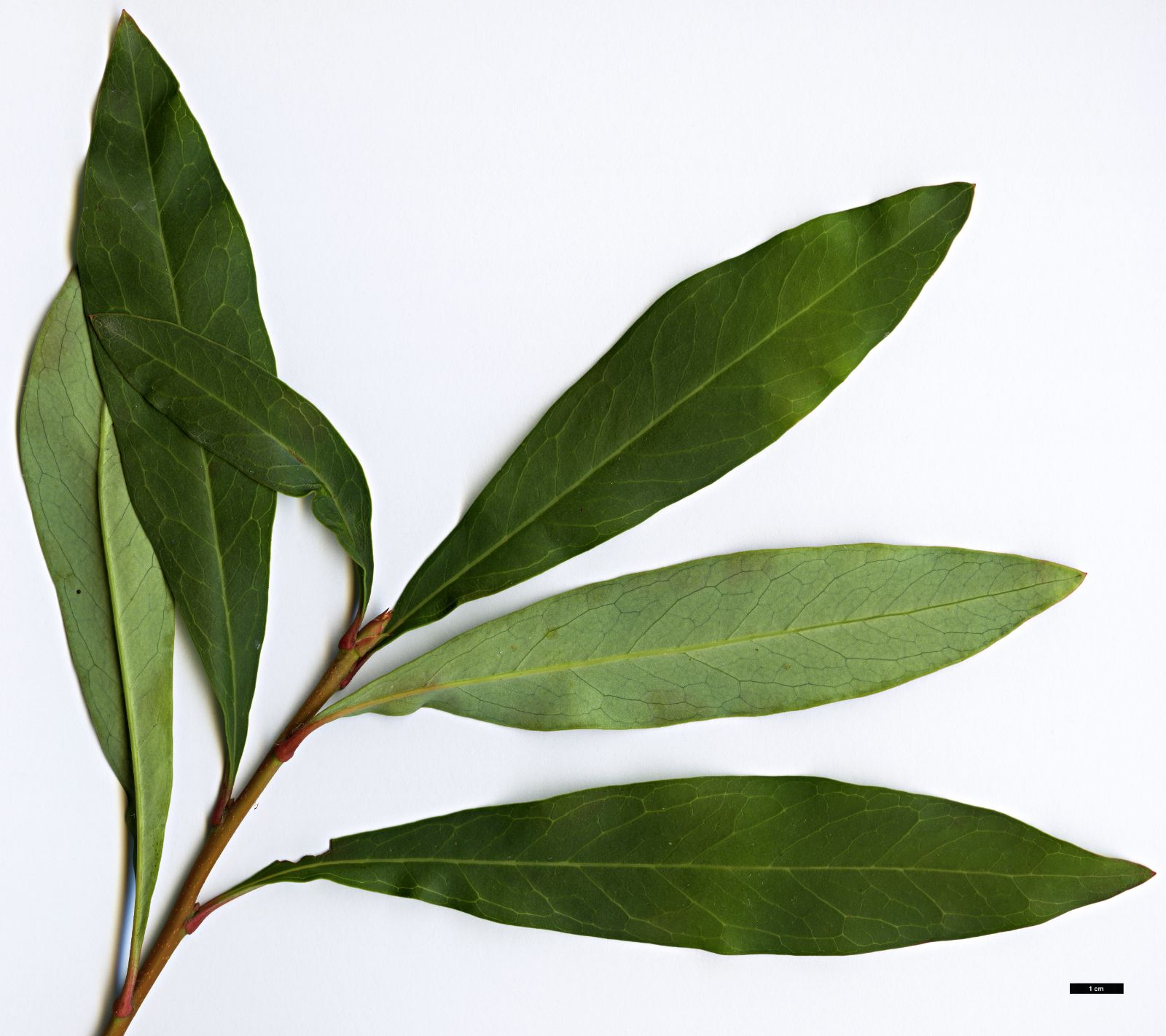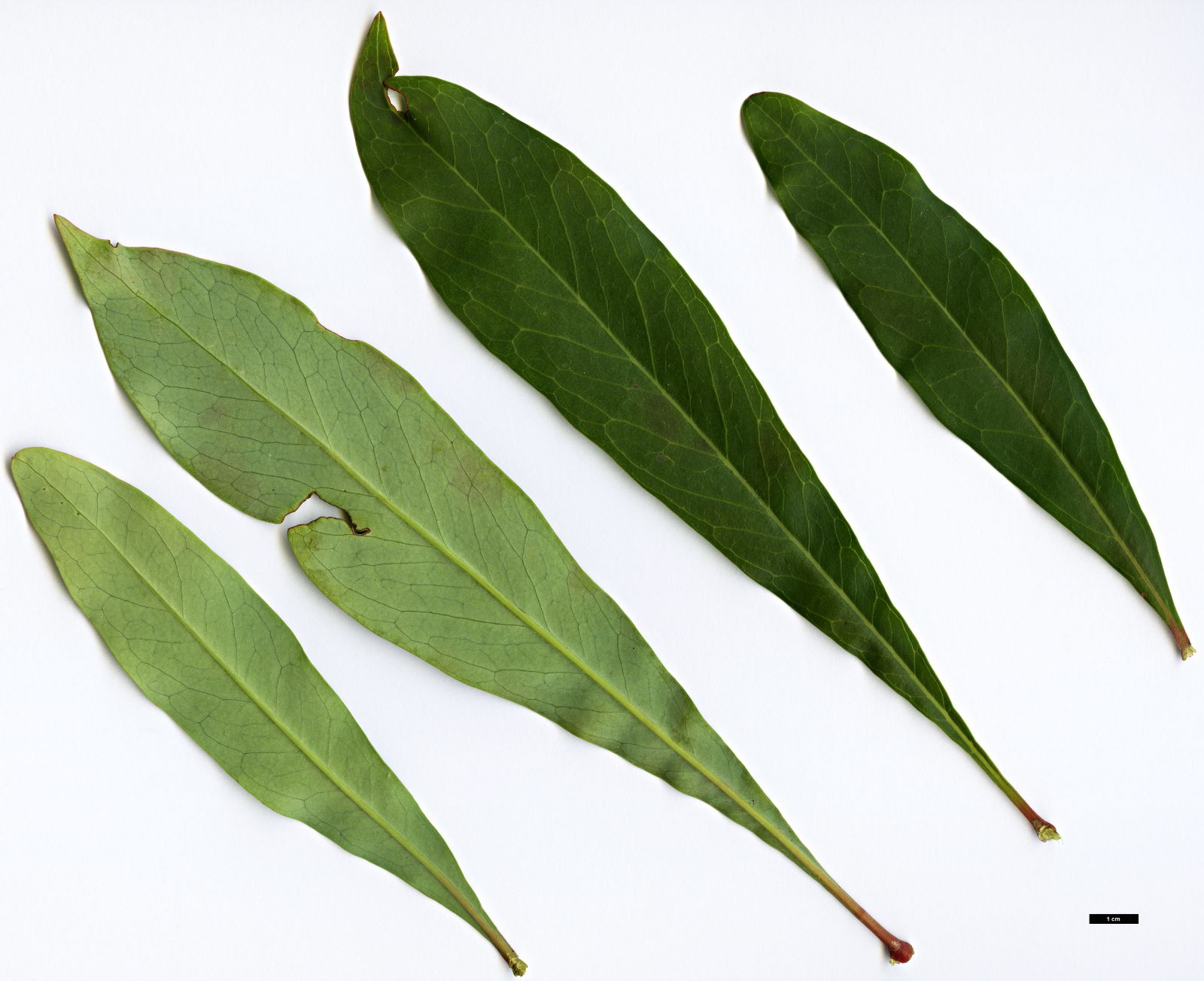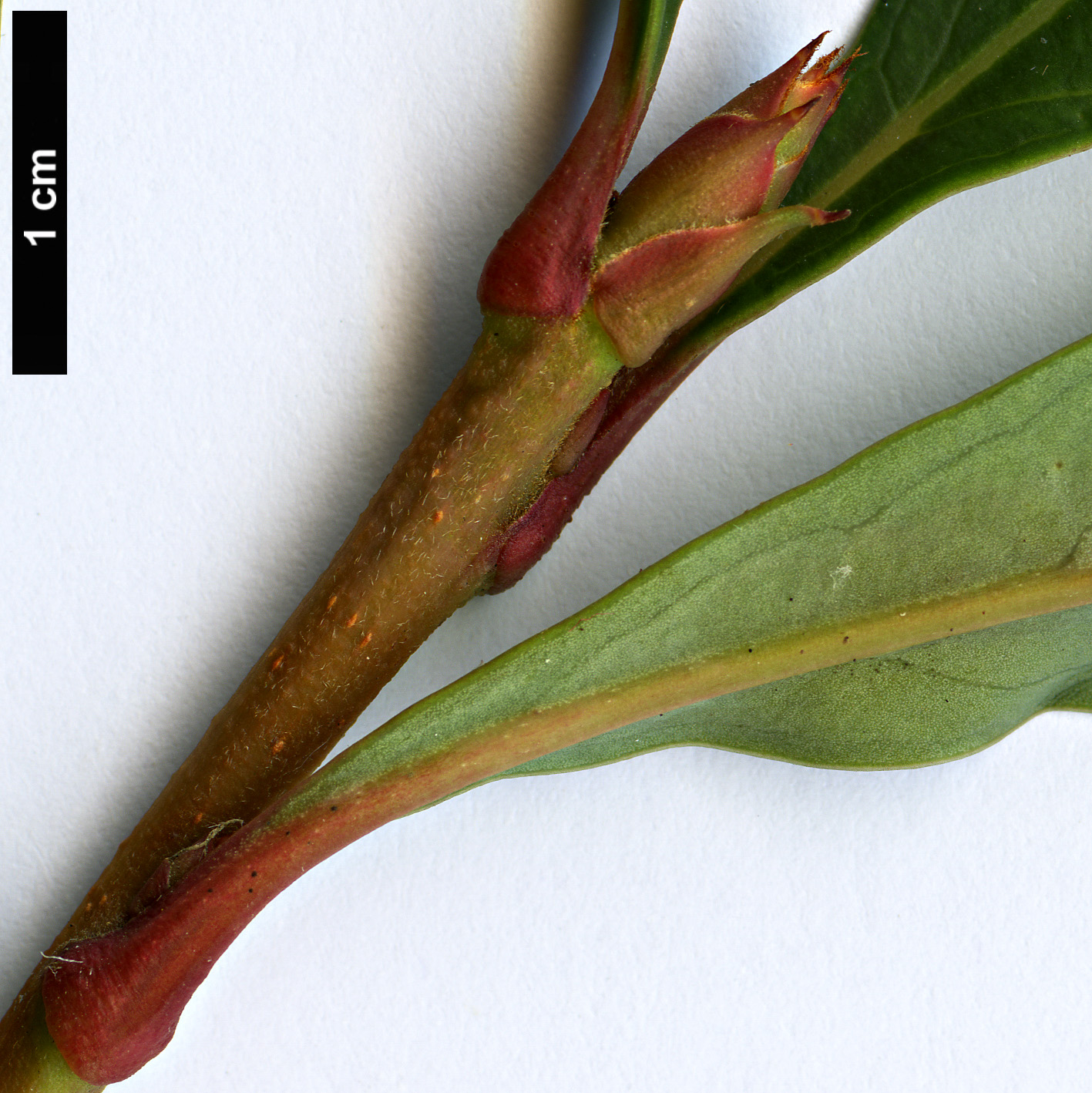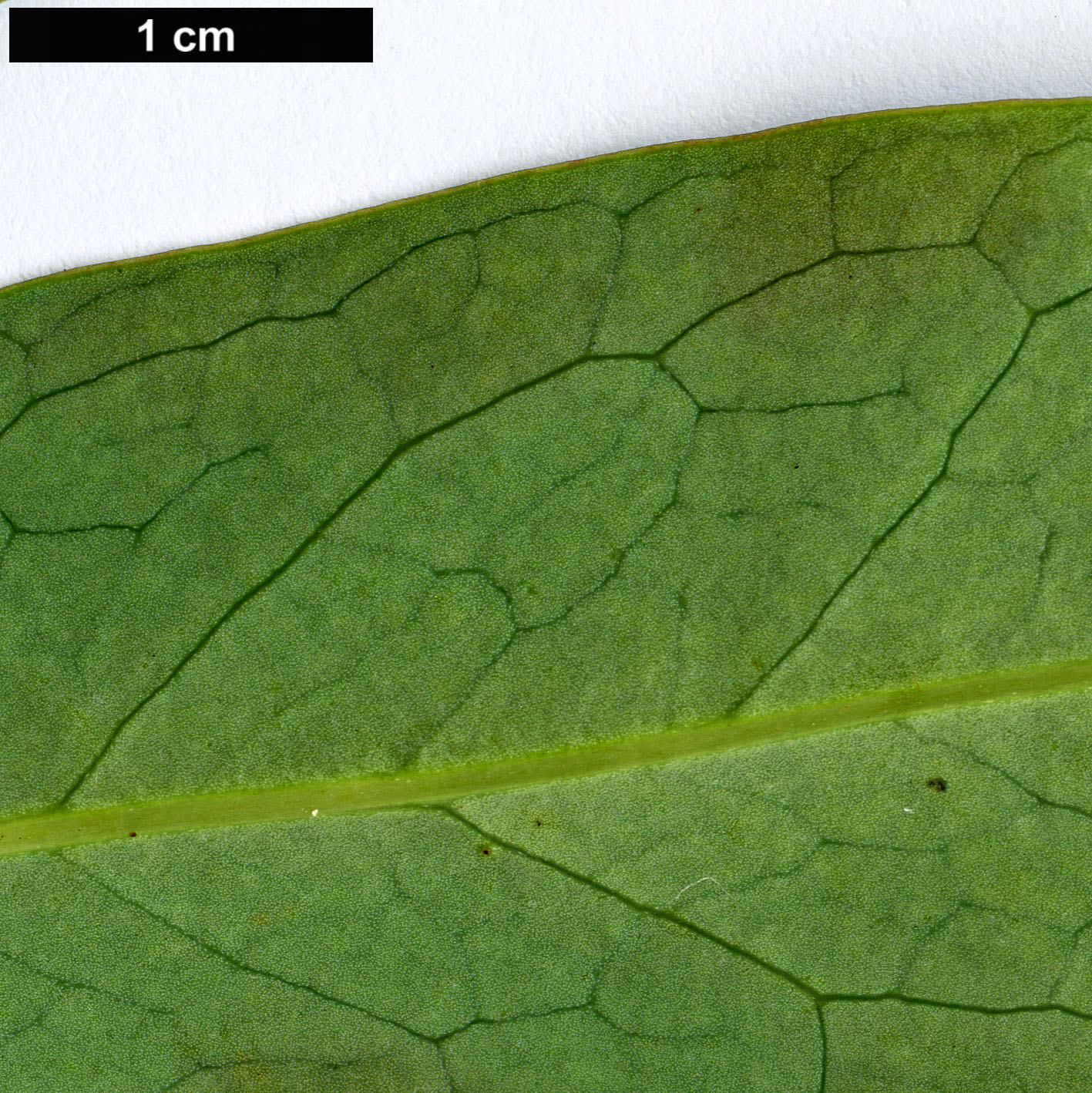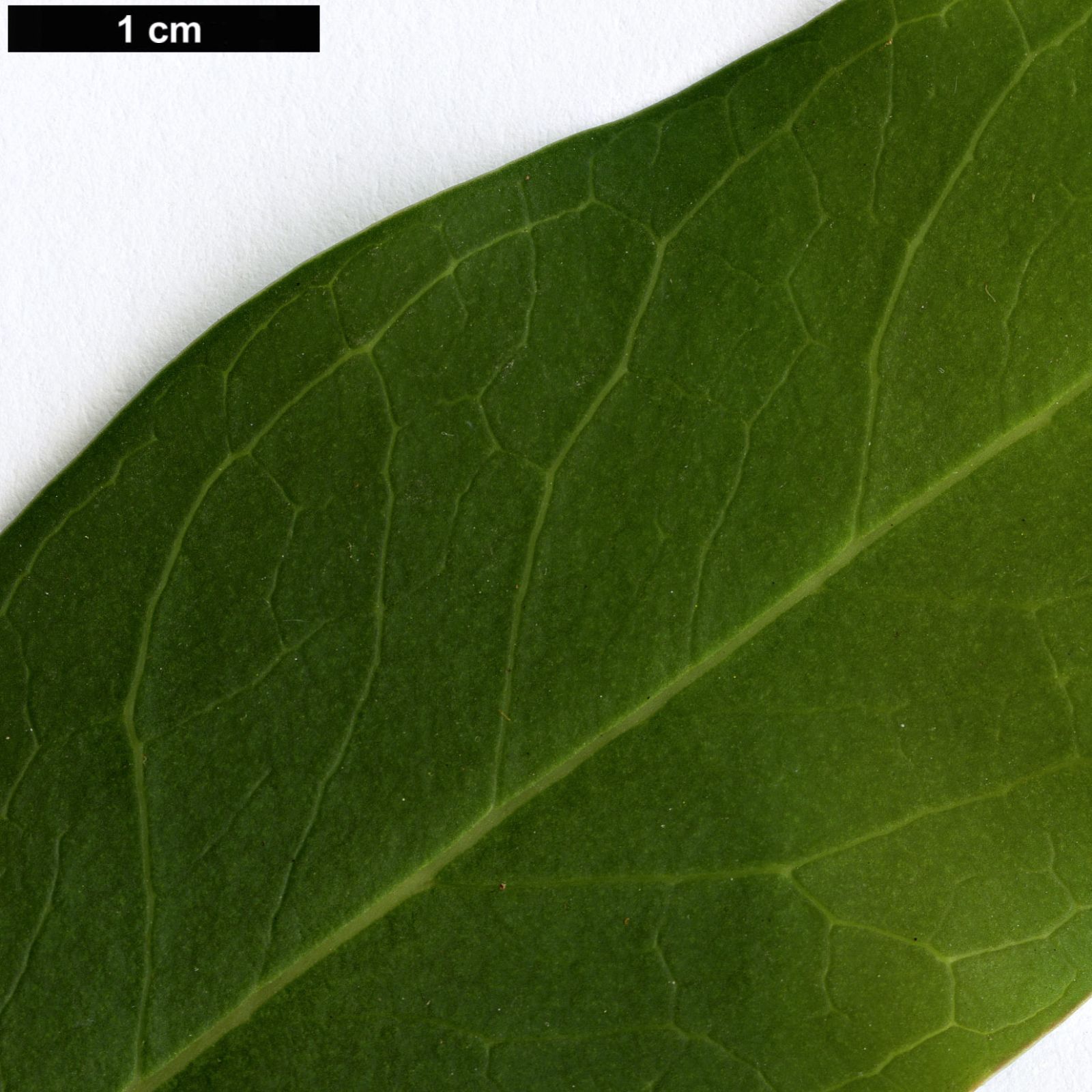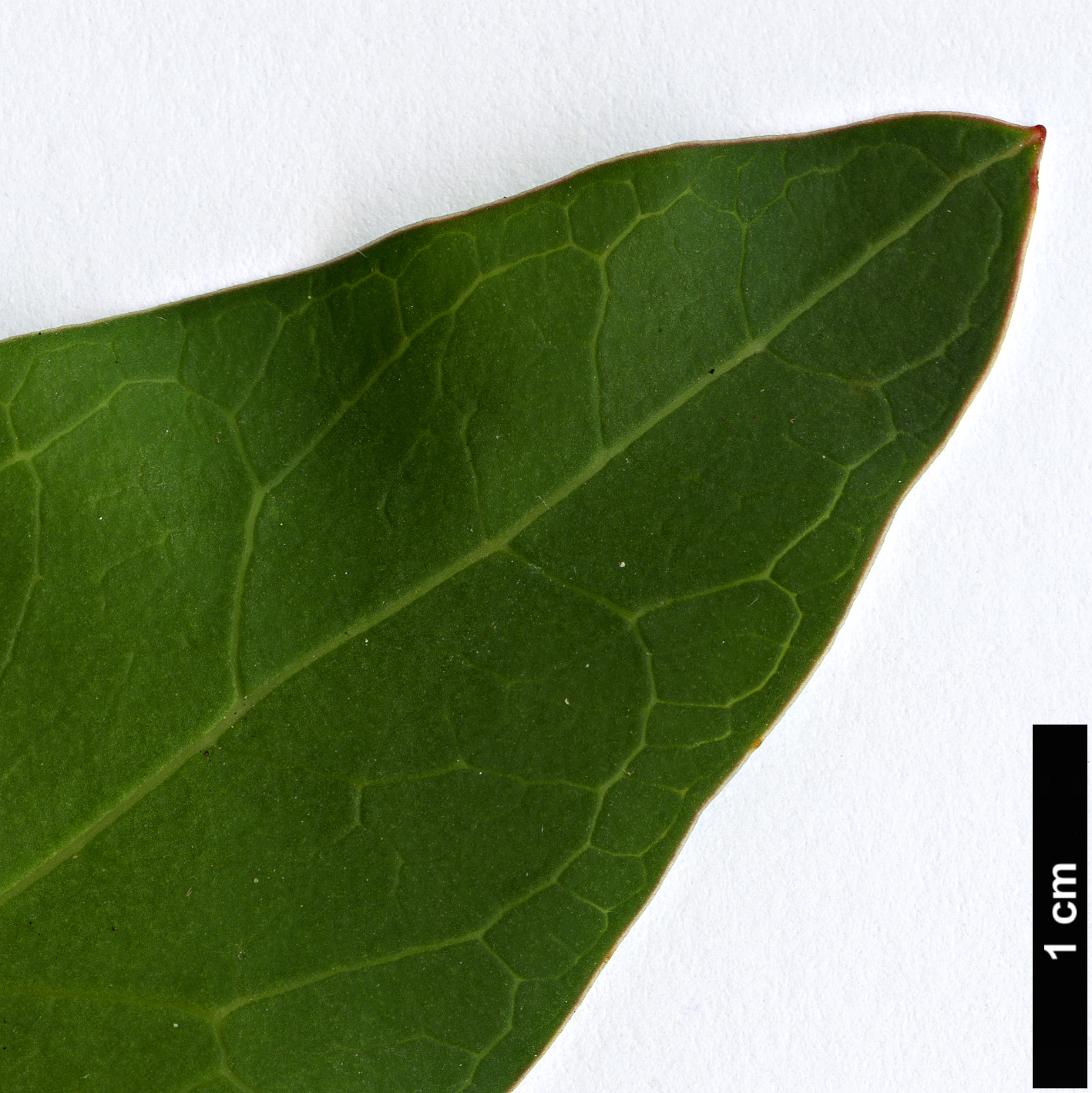Telopea oreades
Credits
Article from New Trees by John Grimshaw & Ross Bayton
Recommended citation
'Telopea oreades' from the website Trees and Shrubs Online (treesandshrubsonline.
Genus
Common Names
- Gippsland Waratah
Shrub or tree to 12 m; highly branched. Leaves narrowly obovate to spathulate, papery, 11–28 × 1.5–6 cm, secondary veins indistinct above, distinct but not raised below, margins entire, apex acuminate. Inflorescences numerous, 5–8 cm diameter, each with 36–60 flowers; bracts inconspicuous, 1.5–7.5 cm long, pink or green with hairy apices. Flowers pink to crimson outside and deep red inside; perianth 2.8–3.6 cm long, tubular, style incurved. Follicle 5–7 cm long. Flowering August, fruiting October to December (New South Wales). Crisp & Weston 1987, 1995, 2002. Distribution AUSTRALIA: New South Wales (southeastern coastal ranges and in the Monga Valley), Victoria (East Gippsland). Habitat Temperate rain forest and wet eucalypt forest, between 200 and 1200 m asl. USDA Hardiness Zone 9. Conservation status Not evaluated. Illustration Irons 2006. Cross-reference S509.
This species has been in cultivation since 1910, when it was introduced to Ludgvan Rectory in western Cornwall by the Revd A.T. Boscawen, and has grown at Wakehurst Place since 1968. As Clarke (1988) records, it has suffered from frost there in the past, but it can be expected to tolerate temperatures of –12ºC without harm (Irons 2006). It is becoming more frequently grown in southwestern Britain, where it is commercially available, but could be tried more widely, even away from the coast. A 3 m specimen at Tregrehan, planted in 2002, was flowering beautifully when seen in April 2008.


